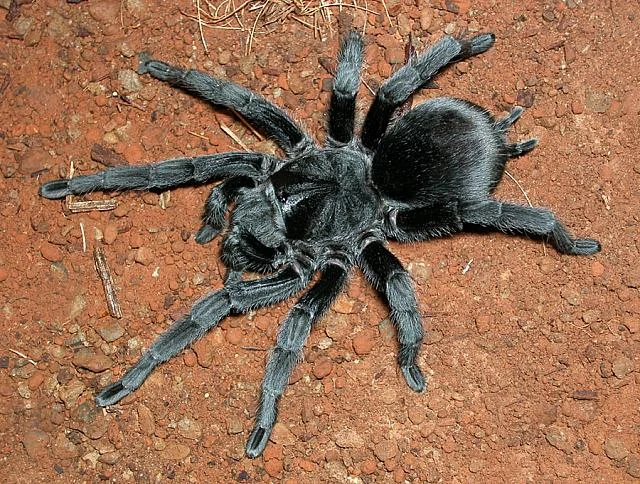Conservation Biology
Urban Expansion and Grammostola pulchra: Habitat Fragmentation in Patagonian Grasslands
Introduction: The Shrinking Grasslands
The Grammostola pulchra, commonly known as the Brazilian Black Tarantula, is primarily found in southern Brazil and Uruguay, favoring grassland and scrubland environments. However, like many species globally, its natural habitat is increasingly threatened by human activities, particularly urban expansion and agricultural development. These activities lead to significant habitat loss and fragmentation.
Habitat Fragmentation Explained
Habitat fragmentation is the process by which large, continuous habitats are divided into smaller, isolated patches. This division is typically caused by human constructions like roads, buildings, and agricultural fields. As Wikipedia explains, fragmentation reduces the total amount of habitat available and isolates populations, hindering movement and gene flow.

Specific Impacts on G. pulchra
For a ground-dwelling, burrowing species like *G. pulchra*, fragmentation poses several threats:
- Reduced Foraging Area: Smaller habitat patches support less prey, limiting food resources.
- Limited Dispersal: Young tarantulas (spiderlings) find it harder to disperse and establish new territories when habitats are disconnected. Roads and urban areas act as significant barriers.
- Genetic Isolation: Separated populations cannot interbreed easily, leading to reduced genetic diversity over time. This can make populations more vulnerable to diseases and environmental changes. Understanding tarantula habitat conservation is crucial.
- Increased Exposure: Tarantulas near urban edges are more likely to encounter humans, pesticides, and non-native predators or competitors.
Urban Edge Effects
The boundaries between natural habitats and developed areas, known as “edges,” create unique environmental conditions. These edge effects can include altered temperature, humidity, light levels, and increased pollution, which may not be suitable for species adapted to interior habitat conditions like *G. pulchra*. The stress from these altered conditions can impact their health and reproductive success.
Did You Know? Even seemingly small barriers like paved roads can be insurmountable obstacles for ground-dwelling invertebrates like tarantulas, severely limiting their movement between habitat patches.
Conservation Implications
The ongoing expansion of urban centers in southern Brazil and Uruguay necessitates targeted conservation strategies for species like *Grammostola pulchra*. Protecting remaining large grassland areas and establishing habitat corridors to connect fragmented patches are vital steps. Promoting sustainable land-use planning that considers biodiversity hotspots is essential for the long-term survival of this iconic tarantula and the ecosystems it inhabits.
Further Reading: The concept of habitat fragmentation is detailed on Wikipedia.